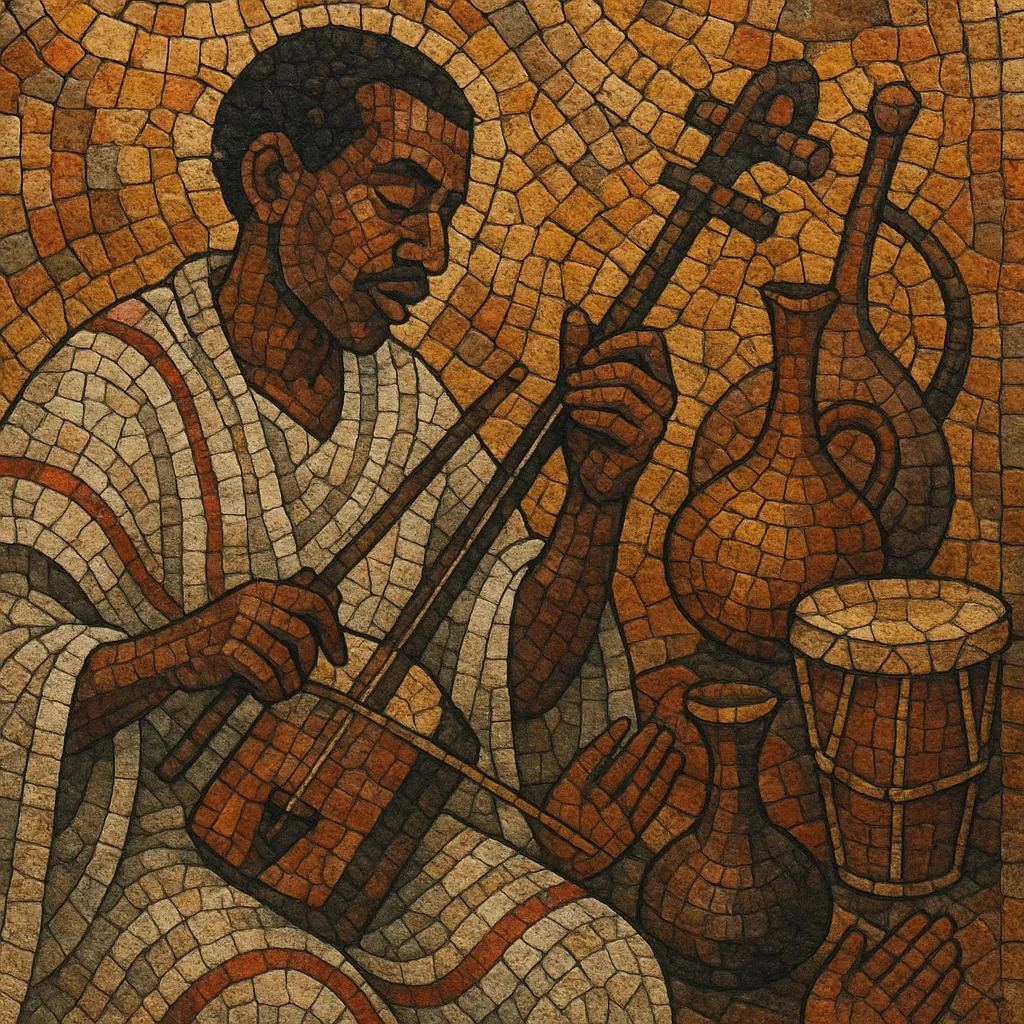Azmari is a centuries-old Ethiopian minstrel tradition centered on witty, improvisatory song-poetry performed in tej (honey-wine) houses and community gatherings.
Azmaris typically accompany themselves on the masenqo (a one-string bowed lute) or the krar (a 5–6 string bowl lyre), with handclaps, kebero drums, and audience participation. The melodic language draws on Ethiopia’s pentatonic qenet modal system (such as tizita, bati, ambassel, and anchihoye), and performances often feature call-and-response, dance (including eskista shoulder dance), and sharp social commentary.
Lyrically, azmari art is famed for sem-ena-werq (“wax and gold”)—double-entendre poetry that balances humor, praise, satire, and coded critique—making it both entertainment and a living vehicle for oral history and public discourse.
Azmari practice emerged many centuries ago within the highland cultures of Ethiopia, growing out of local secular song traditions that complemented the region’s sacred musical life. While exact dates are difficult to fix, historical accounts point to a well-established minstrel culture by the early modern period. Azmaris served as social commentators, storytellers, and praise-singers—akin to minstrels in other cultures—performing for both commoners and nobility.
With the rise of urban centers, particularly Addis Ababa in the late 19th and early 20th centuries, azmari culture flourished in tej (honey-wine) houses. These spaces cultivated a distinctive performance etiquette: audience requests, tipping, improvisatory verses, and playful verbal duels between performers and patrons. The sem-ena-werq (wax-and-gold) poetic technique enabled layered meanings, allowing azmaris to entertain while simultaneously delivering social critique.
Azmari melody and accompaniment revolve around Ethiopia’s pentatonic qenet modes (tizita, bati, ambassel, anchihoye), realized on the masenqo and krar. Rhythmic feels often emphasize asymmetry and ‘additive’ grooves (frequently felt in lilting 6/8), reinforced by handclaps and kebero drum patterns. This modal-rhythmic matrix became a key reservoir for later Ethiopian popular music.
From the mid-20th century onward, select azmari performers made commercial recordings, and field recordings documented the tradition in urban and rural settings. The international reissue boom (e.g., Ethiopiques-era interest) further spotlighted azmari artistry, inspiring collaborations with global musicians and new ensemble formats that retain core features—improvised verse, modal riffs, and participatory energy.
Today, azmari performance lives on in Ethiopian tej houses and on international stages. Contemporary troupes and soloists preserve the wit, improvisation, and modal depth of the style while integrating new instruments or cross-genre influences. Despite modernization, the tradition remains an important conduit for communal storytelling, satire, and celebration.


